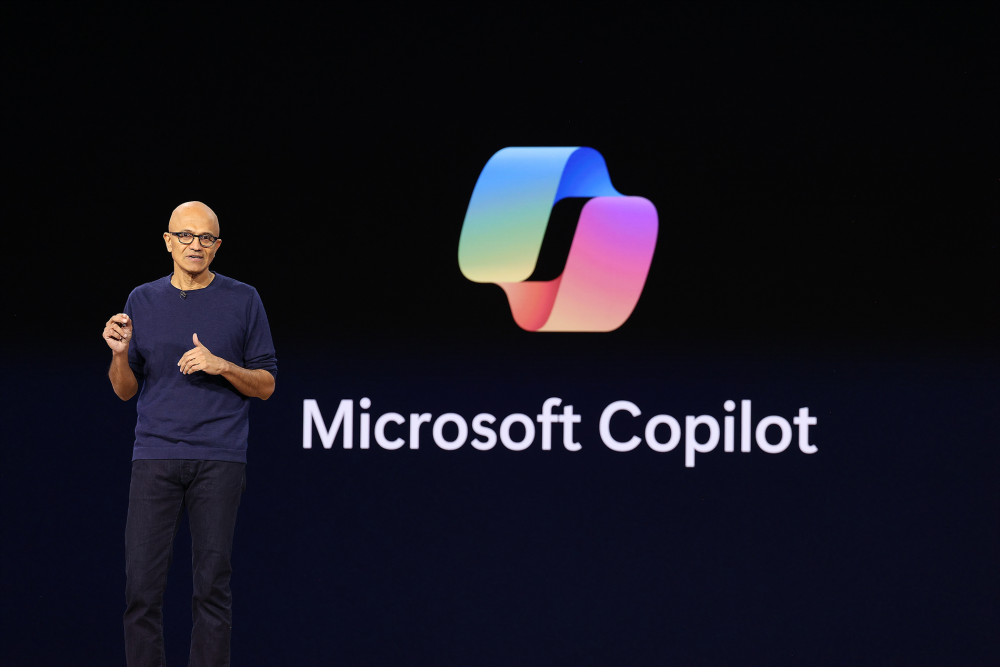This year, all the buzz has been around AI (artificial intelligence)—more specifically generative AI. Oftentimes, buzz around certain technologies tend to fizzle out at some point, but if we look closely at the history and recent news from some big players such as Microsoft, we see AI might just have some staying power.
The reality is AI isn’t a new buzzword this year. Back in 1950, Alan Turing, a young British polymath, explored the mathematical possibility of artificial intelligence. In his 1950 paper, Computing Machinery and Intelligence, he explored how to build intelligent machines and test their intelligence. Five years later, the proof of concept was initialized through Allen Newell, Cliff Shaw, and Herbert Simon’s Logic Theorist, which was a program designed to mimic the problem-solving skills of a human.
Many consider this program to be the first artificial intelligence program and was presented at the Dartmouth Summer Research Project on Artificial Intelligence hosted by John McCarthy and Marvin Minsky in 1956. In this historic conference, McCarthy brought together top researchers from various fields for an open-ended discussion on artificial intelligence, the term which he coined at the very event, and which gave him the moniker by some as the “father of AI.” From 1957 to 1974, AI flourished, according to Harvard University.
Now, more than half a century after its initial invention, we are seeing the rise of AI happening in many ways. Perhaps the most interesting point to be made here is the value it provides to businesses and communities at large.
Let’s just for a moment consider the recent announcements from Microsoft Ignite 2023, which took place earlier this month. We saw the introduction of Copilot Studio, Microsoft Fabric, Copilot in Microsoft Dynamics 365 Guides, a new era of security, and so much more. (Yes, I have read the commentary on LinkedIn).
“The interesting thing is (we are) entering this exciting new phase of AI where you are not just talking about it as technology that is new and interesting,” says Satya Nadella, CEO, Microsoft. “You are getting into the details of product making, deployment, safety, and real productivity gains—all the real-world issues—and that is just the most exciting thing for all of us as builders.”
I want us to take an even deeper dive from the perspective of the announcement surrounding Microsoft Copilot Studio, which is a low-code tool to customize Microsoft Copilot for Microsoft 365 and build standalone Copilots. Copilot Studio is included in Copilot for Microsoft 365 and brings together a set of powerful conversational capabilities—from custom GPTs, to generative AI plugins, to manual topics. This allows companies to easily customize it and manage and secure customizations and standalone copilots with the right access, data, user controls, and analytics.
“We are at a tipping point,” says Nadella. “This is clearly the age of copilots—from digital natives like Airbnb or Duolingo to Shopify as well as the world’s largest companies … all are deploying the Microsoft Copilot. To companies in every industry, who are building their own copilots, … it is fantastic to see people deploy their own copilots.”
And this is the part, that is really, truly exciting—the real-life applications that are going to make an impact in business. Eight months ago, Microsoft introduced Copilot for Microsoft 365 for early adopters and now new data shows us the productivity gains that come along with it. We see that:
- 70% of Copilot users said they were more productive.
- 68% said Copilot helped them jump-start the creative process.
- 67% said Copilot saved them some time so they could focus more on important work.
While this isn’t the largest pool, however, to gather its data, Microsoft surveyed 297 users in its Copilot for Microsoft 365 Early Access Program to learn how they are using Copilot—from meetings to drafting documents. Overall, they reported productivity gains.
“Copilot will be the new UI that helps us gain access to the world’s knowledge and your organization’s knowledge, but most importantly it is your agent who helps you act on that knowledge,” says Nadella.
The key here is looking at the use cases. It’s critical to examine the industry cases to see what technologies will have real staying power. We must look at the corporate benefits, the ROI (return on investment), and the productivity gains we will see from technology. That is when technology becomes truly useful, and it seems Microsoft agrees.
“All of this innovation will only be useful if it is empowering all of us in our careers, in our communities, in our countries,” says Nadella. “That is our mission.” We must be able to tap into the benefits to extend the journey into our everyday lives, work, and play, to ultimately apply the data to achieve even greater innovation.
Want to tweet about this article? Use hashtags #IoT #sustainability #AI #5G #cloud #edge #futureofwork #digitaltransformation #green #ecosystem #environmental #circularworld

